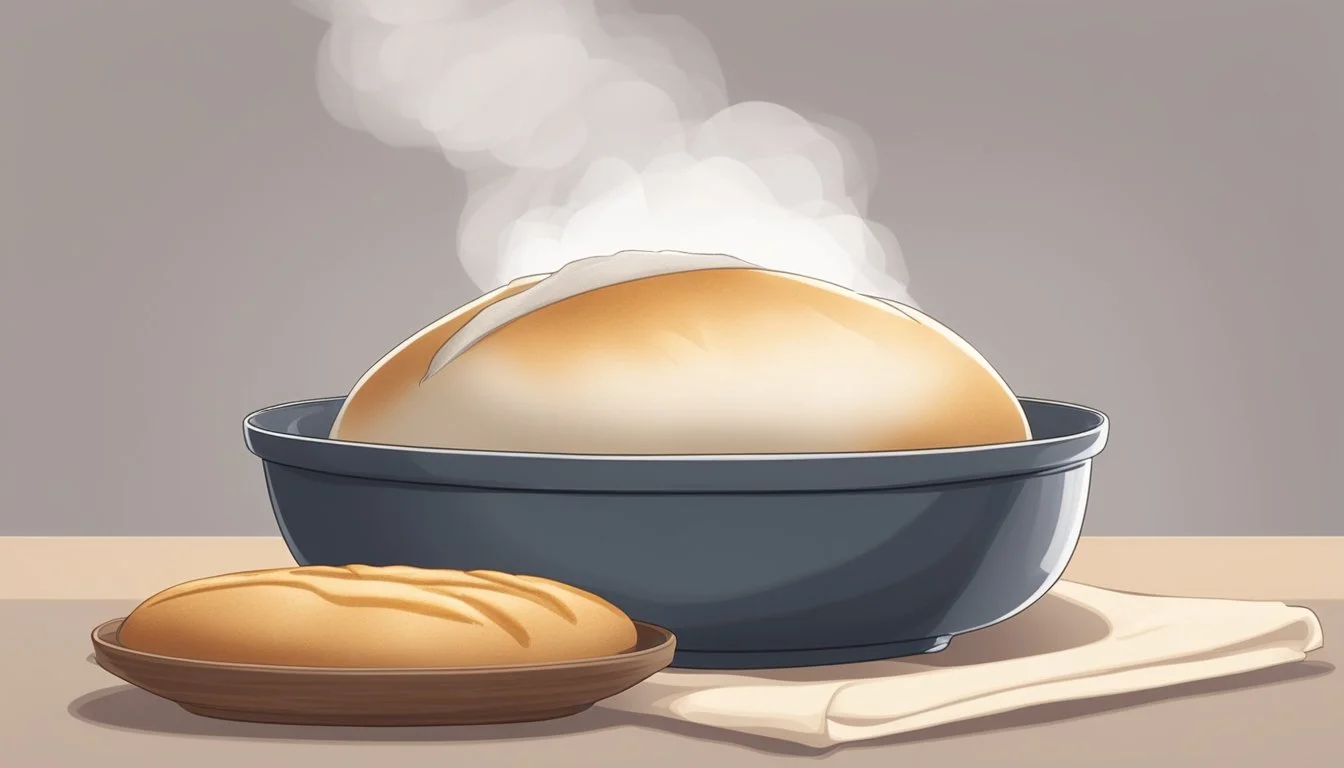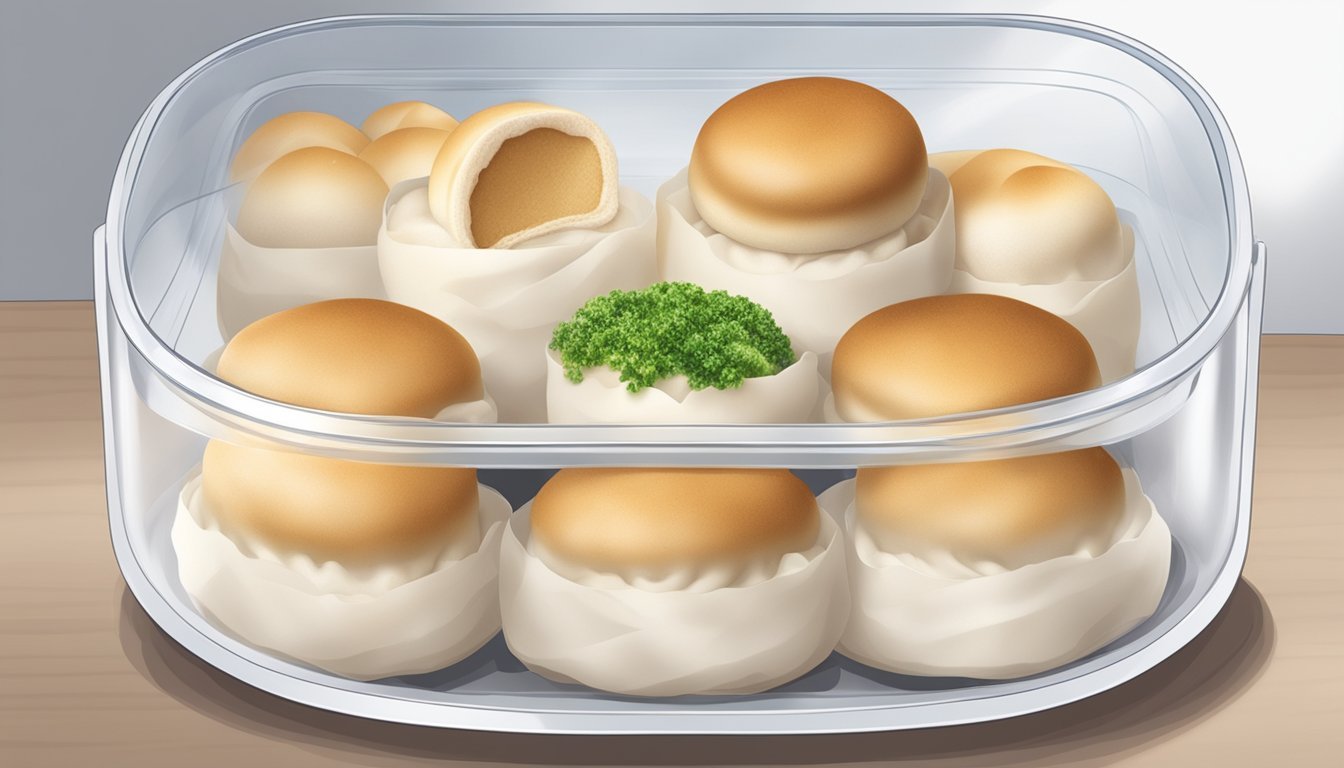Best Way to Reheat a Pork Bun
Ensuring Softness and Flavor Retention
Reheating pork buns properly is essential for enjoying them as if they were fresh from the kitchen. Preserving the softness of the bread (What wine goes well with bread?) while ensuring the pork filling is heated through maintains the quality of the bun's texture and flavor. While pork buns can last several days in the refrigerator and up to six weeks in the freezer, the key to a satisfying leftover experience lies in how they are reheated.
The technique chosen to reheat pork buns significantly impacts their freshness and taste. Steaming is the most recommended method to achieve a soft texture that closely mimics the original state of freshly made pork buns. This process gently warms the bun without drying it out, which is crucial for keeping the bread's delicate consistency and the pork succulent.
Understanding Pork Buns
Pork buns, commonly referred to as bao buns, originate from Asia and have gained considerable popularity around the world. These savory treats consist of a soft, pillowy dough that encloses a rich and flavorful pork filling.
The base of a pork bun — its dough — typically contains flour, water, a raising agent such as yeast, and sometimes sugar and oil. The yeast is a crucial ingredient here, as it helps the dough to rise and contributes to the soft, bread-like texture that these buns are known for.
When it comes to the filling, pork is seasoned with an array of spices and ingredients that can include soy sauce, oyster sauce, sesame oil, and sugar, mingling together to create a well-balanced flavor profile. The filling is encased within the dough and the bun is traditionally steamed to perfection.
Here's a simple breakdown of pork bun’s components:
Component Role Dough Provides the soft outer layer, typically leavened Filling Seasoned pork, the heart of the bun
Steaming, as mentioned, is the most common cooking method for pork buns, helping to maintain their moisture and tenderness. There's an art to reheat these buns properly to ensure they retain these essential textures and flavors.
In summary, pork buns are a celebrated Asian food delicacy, distinguished by their soft, yeasty bread and flavorful pork filling. They are a testament to the fundamental culinary principles of texture contrast and flavor harmony.
Storing Pork Buns Properly
Proper storage is crucial to maintain the softness and moisture of pork buns, whether they are freshly cooked or leftovers. Employ correct fridge and freezer techniques to extend the life and quality of your pork buns.
Fridge Storage Techniques
In the refrigerator, pork buns should be placed in an airtight container or covered tightly with plastic wrap to keep out excess moisture and other flavors. They should be consumed within 2-3 days to ensure quality.
Freezing and Thawing Practices
For long-term storage, freeze pork buns by spacing them out on a baking sheet in the freezer before transferring to a freezer bag or container. To thaw, leave them in the refrigerator overnight or use a microwave for rapid defrosting, ensuring they remain soft and moist.
Extending Freshness
Store in a cool, dry place to prevent buns from going stale. Aluminum foil can help maintain moisture when used for wrapping, and a paper towel can absorb excess moisture in a container.
Refrigeration vs. Room Temperature
Buns stored at room temperature will remain soft for a short period. However, refrigeration is recommended for leftovers to limit bacterial growth and extend freshness.
Packing Leftovers
Wrap individual buns in plastic wrap or place them in an airtight container. If buns are left uncovered, they will dry out and become harder.
Tips for Preventing Dryness
Keep the buns covered at all times and consider a piece of damp paper towel in the container to help maintain moisture without making the buns soggy.
Deciding on Reheating Times
Time and temperature are critical; too long or too high a temperature can dry out buns. Generally, 10-15 minutes in an oven or a few minutes in a steamer will warm them through without drying them out.
Food Safety Considerations
Never store buns at room temperature for more than 2 hours to reduce risks of foodborne illnesses. Always reheating to an internal temperature of 165°F ensures food safety.
Optimal Conditions for Reheating
To reheat, aim for a gentle warm-up process. Using moist heat methods like steaming maintains the soft texture and prevents the bread from becoming tough.
Steaming Technique
Place pork buns in a steamer lined with parchment paper over boiling water. Steam will evenly heat the buns while preserving their moist and soft texture.
Oven-Based Methods
Heat buns wrapped in aluminum foil on a baking sheet at a low temperature in the oven. This method retains the internal moisture of the bun while reheating them thoroughly.
Microwave Tactics
Reheat buns in the microwave covered with a moist paper towel to keep them soft. Microwaving with added moisture helps retain the bun's texture.
Pan-Frying Approach
Pan-frying with a bit of oil on a skillet can crisp the outside of buns while maintaining a soft interior, offering a different texture profile.
Toaster Oven Adaptations
Toaster ovens are suitable for reheating small quantities. Using a moderate temperature setting will warm the buns throughout without overdrying them.
Additional Reheating Tips
Always use moderate heat and cover the buns with foil or a damp cloth during any reheating process to trap steam and prevent the bread from losing its softness.
Serving Ideas
Warm, soft buns can be enhanced with a side of soy sauce or hoisin sauce for dipping. Ensure they're thoroughly heated before serving to enjoy their full flavor.
Proper storage and careful reheating are the keys to enjoying soft, moist pork buns that taste freshly made. Keep buns airtight and moist, and reheat with care to ensure the ideal texture and flavor.



